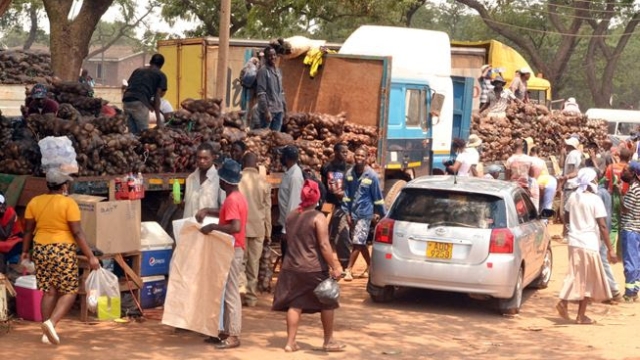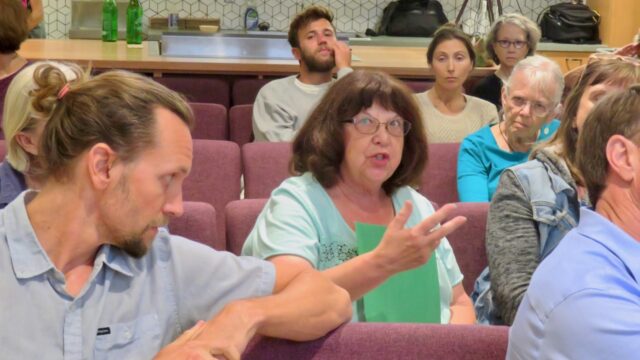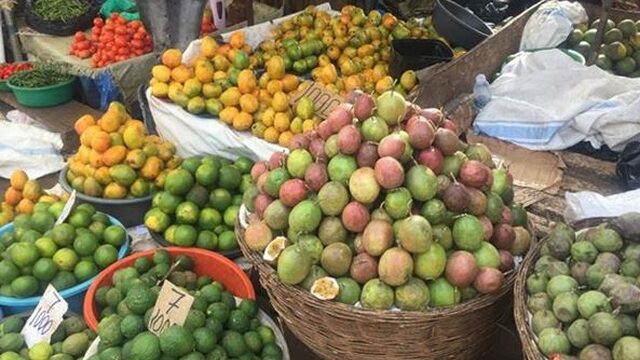
Mass food markets – the Facebook of African food systems
When you want to understand African food systems, visit African mass food markets in big cities. This is where most food commodities are mobilized from diverse parts of each country. While every community may have its own local market, commodities in that market are not as diverse as those found in mass food markets in big African cities like Addis Ababa, Nairobi, Kampala, Cairo, Kinshasa, Lagos, Accra, Bamako, Dakar, Harare, Maputo, Johannesburg and many others.
Knowledge in action
To a very large extent, African mass food markets are the real Facebook of African food systems, not supermarkets or shopping malls which are often filled with processed food which has lost its cultural roots and identity. Due to the colonial experience, some farmers and consumers have been socialized to consider formal markets like supermarkets and processing companies as the only markets. Such farmers have never witnessed an African mass food market in action because they have been used to handing over their commodities to parastatals or marketing boards and wait for their payment. No questions asked about grades, competition, volumes from elsewhere, opportunities for value addition or anything. Seeing the market in action is equivalent to witnessing knowledge in action.
Using data and evidence to build resilient food systems
It is impossible to build resilient food systems without consistently gathering data from diverse production zones and mass food markets which handle more than 70% of the food for the majority. Instead of focusing on a few value chains, African policy makers should use data and evidence from mass food markets and diverse production zones to build entire food baskets. Paying attention to data and evidence will ensure production zones always speak to markets in ways that ensure supply does not cause gluts or shortages. In most cases, the demand side does not rapidly change. Each household consumes a particular volume daily. However, competition between farmers or food producers who approach the same consumer often leads to huge losses for farmers. That is why coordinating supply and demand is critical.
There is a tendency for farmers to blame traders or middlemen for poor prices but this is like shifting the blame because traders are often not the ones who consume but only respond to customer buying capacity. Traders cannot offer prices higher than they expect to get from the consumers. What is important is matching the what, who, when, where and when questions around food production and supply. That cannot be done without data on who is producing what where and when. A strong framework for building resilient supply chains using data and evidence is very important for policy makers because there is a limit to which individual farmers and communities can make sense of data and use existing evidence to make valuable decisions.
The first step is data collection from production, along the supply chain (logistics – what is being transported from where to where?) and collecting data from the demand side or markets in terms of volumes demanded by different markets as well as quantities that can be absorbed by each market without causing gluts that cause losses for farmers or shortages that push prices beyond the majority of consumers. Markets also want to know how much is being produced out there? How much is being supplied in different markets? Unfortunately, for both formal and informal, most African governments lack systems or pathways for accurately and consistently informing all actors in the food system. When markets have no idea what is being produced and where, it becomes difficult for them to operate efficiently.
The value of converting the ministry of agriculture into a giant switchboard
In order to creatively match supply and demand in food systems, each African country’s ministry of agriculture should be converted into a giant switch board whose main role becomes consolidating statistics on what is happening in diverse production zones in real time including volumes of commodities flowing to different markets, inputs requirements as well as how resources are being used. The core business of the minister of agriculture or permanent secretary should not be visiting every field day but making sense of what is coming from thousands of field days happening across the country every day. If ministers and permanent secretaries are to visit every farmer who is doing well, they will spend more than five years before completing that exercise because there is no shortage of successful farmers worth visiting.
The core mandate of ministries of agriculture should shift from supervising farmers to valuating the contribution of different commodities and markets to rural development and economic development at national level. Key daily questions can include: How much is being generated in markets and going back to support rural production? Capturing volumes and prices for different commodities in markets and consolidating statistics in real time can easily show the quantitative contribution of the markets and commodities to Gross Domestic Product (GDP) and rural development in terms of education, financing health services, inputs, energy and technological investments.
The extent to which mass food markets are changing the livelihoods of rural communities can be revealed through data on incomes circulating in these markets. For instance, what is the contribution of baobab to rural livelihoods? How much are mass markets contributing to building resilience in urban populations? These markets are the ones sourcing and distributing food in urban population and also ensuring diverse nutrition is affordable to the majority of rural and urban consumers.
Collecting data to inform the daily operations of the ministry of agriculture should not be taken as a donor-driven project but integrated in the government fiscus so that it becomes part of the new normal. When the ministry of agriculture starts functioning as a giant switch board for the entire food system, all actors in the food system become accountable. The current situation where contractors are left doing their own things, NGOs doing their own thing, parastatals doing their own thing, farmer unions doing their own thing and individual farmers doing their own thing, makes it very difficult to organize agriculture and food systems. Yet all these diverse actors are saving the same consumer and same market.
Most development agencies are often competing to support production of the same commodities without any relation to what the government and contractors are doing. More importantly, their interventions lack data or evidence to justify why they should, for instance, promote the production of exotic chickens or goats in communities where indigenous chickens, goats and guinea fowls do very well naturally. These organizations would make a difference by cultivating the external market for indigenous food rather than contributing to more gluts.
Understanding who is producing what, where and for who requires the ministry of agriculture to set up an integrated system for gathering, interpreting and sharing information within the agriculture and food systems sector. A culture of data collection and sharing needs to be cultivated from policy to grassroots levels. Farmers and rural communities have a lot of information but do not know who to share it with. If you ask them, they know when all their cattle were born, their hectares and several other intricate details which may only need to be gathered and processed into reliable fluid records with the support of extension officers. This should be an important new role for African extension officers not teaching farmers how to grow maize or prepare land as if farmers are not able to do that for themselves or seek relevant knowledge from their peers.
Making sense of climate change through mass food markets
The impact of climate change can also be seen through African mass markets. When production zones which used to supply particular commodities like yams and indigenous rice stop being a source of such commodities, it is a sign that production has dwindled due to climate variability. Policy makers can use such intelligence to save commodities that may be threatened by extinction. With globalization become more aggressive, traditional practices are not remaining the same. A lot of changes are happening noticed and unnoticed across Africa. Some of the changes are associated with the increasing loss of biodiversity and degradation of ecosystems which are the foundation of indigenous knowledge in many African communities. Biodiversity loss and ecosystems degradation also means loss of indigenous knowledge systems. Mass food markets are part of the solution by blending food and knowledge from diverse sources or communities, creating totally different knowledge systems. Given high levels of ecosystems degradation and biodiversity loss in many communities and production zones, most communities will depend on mass markets for their food.
Charles Dhewa, CEO, Knowledge Transfer Africa
Email: charles@knowledgetransafrica.com / charles@emkambo.co.zw / info@knowledgetransafrica.com
Website: www.emkambo.co.zw / www.knowledgetransafrica.com
Mobile: 0772 137 717 / 0774 430 309 / 0712 737 430
Article source: eMkambo blog. Reproduced by permission.
Header image source: Author supplied.






